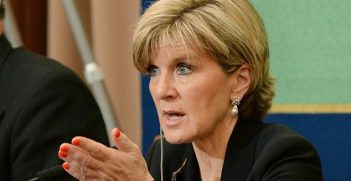The Ratings Industry: How Does Australia Compare?

Despite assertions that Australia is the ‘best country in the world’, it continues to lag in many areas, including educational and environmental indices.
As the government prepared for the G20 Summit late last year we often heard, from the same ministers and commentators who bemoaned the debt and deficit, that Australia is a ‘top 20 country’, ‘the world’s most prosperous nation’ and no longer a middle power but a country capable of global projection and of punching at its considerable weight. ‘I know we’re a great people. You know that too’, the Prime Minister told TV viewers. In another context, the withdrawal from Afghanistan, Opposition Leader Bill Shorten assured them it was ‘what makes Australia the best country in the world’. Earlier, Greg Sheridan informed readers that Australia was ‘the most pleasant, and in many ways the luckiest country in the world’.
Since 2009 the Reputation Institute has placed Australia at or near the top of its index, with Canada and Sweden, for national self-regard.
Yet Finland, which consistently rates highest for education, modestly expresses surprise at that. If you have to keep saying your country is the greatest and cleverest, the cleanest and greenest, maybe it isn’t. The way the state in the four Nordic countries has faced and resolved similar problems to Australia’s (including management of natural resources, education, childcare and worker retraining) sets us a timely example.
Many of the apparently fact-free assertions we now hear are derived from the global ratings industry, which ranks countries in the world against all sorts of criteria. Politicians and the media love to quote the ratings industry’s supportive stories, though rarely the surveys that challenge their party or editorial line. And Australia’s record is mixed. On the GE Global Innovation Barometer, for example, Australia in 2012 was rated a middling country, 16th out of 30, while in the World Bank competitiveness report, New Zealand now ranks first and Australia 65th, which calls into question what is a ‘middle power’ or a ‘top 20 nation’.
Every year since 2011, the UN Human Development Index has placed Australia second in the world after Norway on a score that includes life expectancy, per capita income and years of education. Yet Australia is at the bottom of a ranking of OECD countries for acquiring foreign languages. Another OECD scale placed Australia 25th out of 34 member states for education, behind Chile, Hungary and Slovenia, citing ‘disturbing inequalities’ in Australia. Shocking inequality within and between countries and between the richest and poorest individuals are confirmed by Oxfam every year. The Australian Council of Social Service (ACOSS) in 2014 found one in seven Australians living below the poverty line, disproportionate Indigenous death rates and shortcomings in literacy and numeracy.
Melbourne and Canberra have recently been rated the ‘most liveable’ cities by an OECD index of regional well-being, which may also suggest inequality. The Economist Intelligence Unit in 2014 found Sydney the fifth most expensive city in the world and Melbourne the sixth. Other surveys of costly cities reach different conclusions: expatistan.com places Sydney 11th, Melbourne 18th and Canberra 26th. In 2014 Decoding Global Talent (run by recruiting firms and the Boston Consulting Group) ranked Sydney as the fourth most desirable city in the world for foreign workers after London, New York and Paris.
An advertisement on the back of a Sydney bus last year asserted that the University of Technology, Sydney (UTS) is rated ‘better than world standard’. Impressive though that may seem, global university ratings are confusing. In 2014-5 the Times Higher Education World Rankings placed almost all the top 19 universities in the US, a few in the UK and one in Zurich. Universities ahead of any in Australia included some in Tokyo, Singapore, Munich and Vancouver. Australia’s highest-ranking university was the University of Melbourne (33rd), followed by the Australian National University (ANU) (45th) and the University of Sydney (60th), with others much further down (UTS appeared in the undifferentiated bracket, 226th to 250th). Other surveys produce variations on these results. In the 2014 QS World University rankings, ANU was the highest-placed Australian university (25th), followed by Melbourne (33rd), Sydney (37th), the University of Queensland (43rd), the University of New South Wales (48th), Monash (70th) and the University of Adelaide (100th). US News 2014 Best Global Universities Rankings of 500 institutions included 19 in Australia, led by Melbourne (32nd), with six in the top 100.
Subjective opinion clearly affects both ratings results and our reaction to them. Australia is eighth in the world in per capita military expenditure, a level some deplore as too low and others as too high. Similarly with the Global Peace Index, which assesses ‘peacefulness’ against 22 measures including on-going conflict, militarisation, prison population, corruption and relations with neighbours. Australia rose to 15th in 2014 from 25th when the Index began in 2008, reflecting our declining involvement in wars in the Middle East, which supporters of US policy presumably want to continue. The Global Terrorism Index calculates terrorist incidents and the deaths, casualties and property damage involved. In that, Australia rates lower than on the Global Peace Index, at 95th out of 162, again apparently reflecting our military exploits.
In another contentious area, climate change, Australia was first per capita in the world in 2012 for greenhouse gas emissions and first for loss of species. Australia has the highest emissions of greenhouse gases per unit of GDP of any OECD country apart from Estonia. This may not inspire national pride except among climate change denialists, big miners and developers. A report by the UN Environment Program in November 2014 said that among countries committed to the UN goal of limiting global warming to 2°C above pre-industrial levels, only four nations – Australia, Canada, Mexico and US – are unlikely to meet their respective emissions targets by 2020. This result will not concern the government, however, for ‘coal’, in the prime minister’s view, is ‘good for humanity’, and the treasurer finds wind turbines ‘a blight on the landscape’.
How useful is the ratings industry? Even allowing for subjectivity, it shows that the world’s best practice may not always be in Australia, but elsewhere; and that reputation should be earned, not declared.
Dr Alison Broinowski, formerly an Australian diplomat, is a Research Affiliate at ANU and a member of the Council of the University of Adelaide. This article can be republished with attribution under a Creative Commons Licence.





